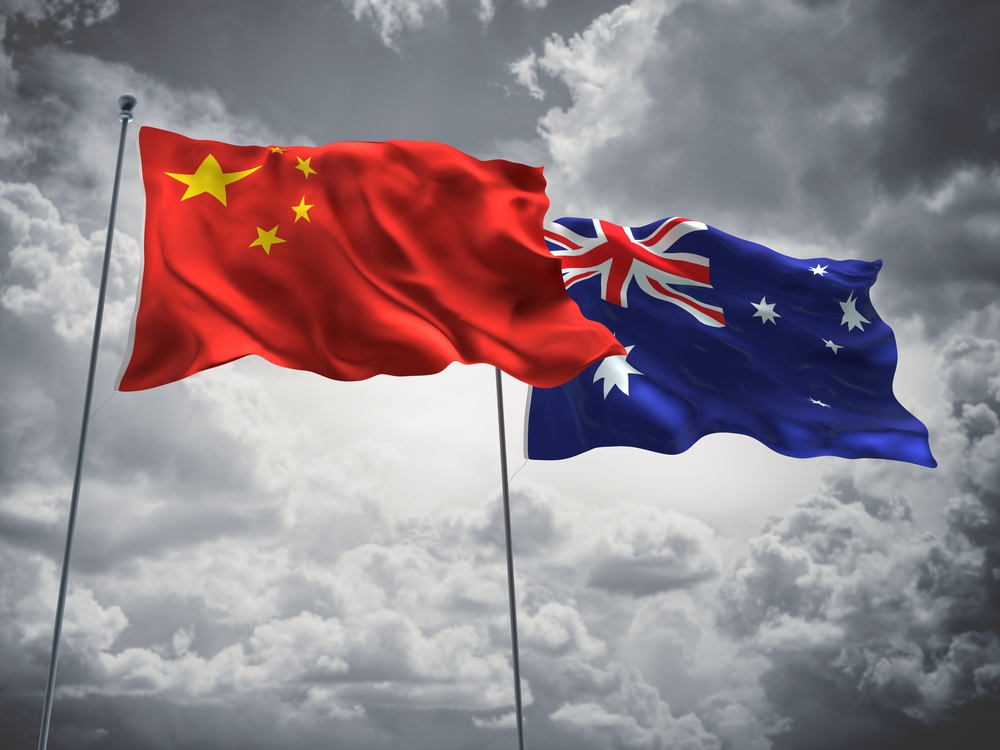How Australia’s relationship with China went down, and then up again, and what comes next

By Richard Maude, Executive Director of Policy, Asia Society Australia.
Prime Minister Anthony Albanese goes to China on 4-7 November with a strong tailwind – much of the fabric of Australia’s pre-2020 relationship with China, including trade and ministerial dialogue, has been restored.
Still, trust remains fragile and China’s path under Xi Jinping – more assertive, ideological and authoritarian – weighs on the future.
It says something about the depths to which the relationship plunged that an Australian Prime Minister last visited China in 2016. The big chill set in from 2017, as the Coalition government responded to growing concerns about foreign interference and aggressive Chinese cyber intrusions.
In April 2020, then Prime Minister Scott Morrison called for an independent review into the origins of the COVID-19 pandemic. China’s punishment was swift. From May 2020 onwards, Beijing imposed a series of coercive measures on Australian exports that ultimately affected some $20 billion of Australian trade.
According to Trade Minister Don Farrell, the value of affected goods is now down to $2 billion. Coal, barley, timber and hay are being traded again. Faced with a losing hand at the World Trade Organization, China has announced it will review tariffs on wine. That leaves lobster growers and some meat exporters waiting still for relief.
The Prime Minister met President Xi Jinping in the margins of the G20 last year. Australian ministers and officials are back talking to their counterparts. The Australia-China High-Level Dialogue was held in September.
Most wonderfully, the Australian journalist Cheng Lei was released from detention (a second Australian, Yang Hengjun, remains imprisoned).
China’s decision to take Australia out of the political and economic deep freezer stems as much from domestic considerations as it does from actions by Canberra. As ever, Beijing’s motivations are hard to read, but its reasons likely include a slowing economy, a full house of difficult relations with partners across the West, and perhaps a hope that Australia might be persuaded to put a little distance between it and the United States.
Still, disciplined Australian diplomacy helped repair the relationship more quickly than even the government might have imagined. Albanese and Foreign Minister Penny Wong brought down the heat of Australia’s often fiery China debate and put dialogue at the heart of their approach. The government has ducked some battles (not imposing human rights sanctions, for example) but not conceded on any top tier national interest.
What comes next? The immediate outlook for further gains, including on trade, business ties and cooperation on issues of mutual interest, like clean energy, is positive. But China also wants Australia to go “beyond stability”, as Ambassador Xiao Qian told Asia Society Australia’s Asia Briefing Live forum in Melbourne on 11 October.
Beijing has its own agenda. It secured a win on 20 October when a government review found there was no security reasons to scrap Chinese company Landbridge’s lease of the Darwin point.
A second long-standing grievance could be eased following the Anti-Dumping Commission’s recommendation that duties on Chinese built wind towers not be extended when they expire in April next year.
Other Chinese interests are out of reach. For example, Beijing seeks strong public backing for membership of the Comprehensive and Progressive Agreement for Trans-Pacific Partnership (CPTPP) trade deal. It wants Australia to approve Chinese investment in the critical minerals industry. And Beijing wants Australia to distance itself from the United States, especially to pull back from building military deterrence across the Indo-Pacific.
Overall, Beijing argues Australia should see it as a partner not an adversary. This call would be more credible if Beijing engaged genuinely with concerns about China’s conduct towards Australia and in the Indo-Pacific.
There is little prospect of this. Inside China, President Xi has strengthened the Party state, brought politics and ideology to the fore, restrained market reforms, and cracked down on dissent. China’s brand of Leninism is innately hostile to the liberalism on which democracies are built.
The global context for an improving Australia-China relationship is one of sharp US-China contestation, a now clear battle over the ideas and norms that should underpin global order, de-risking and economic fragmentation, and the risk of conflict over Taiwan. China’s ambitions for regional pre-eminence are un-dimmed.
For all the government’s commitment to stabilisation, it largely has continued policy frameworks inherited from the Coalition on foreign interference, foreign investment and cyber security. It is doubling down on the idea that Australia needs a more powerful and offensively capable defence force. Cooperation with the United States on deterrence in the Indo-Pacific is accelerating.
This duality in Australian policy approach is evident enough to Beijing and to China’s state media, which regularly warns Australia to change course.
But Australia cannot afford to allow stabilisation to become an end in itself. A long contest with China over the shape of the world order lies ahead: The path on which Xi has set China guarantees that.
Along with dialogue and diplomacy, the Albanese government will have no choice but to keep strengthening Australian resilience to further ruptures in the relationship and to protect the nation’s sovereignty and long-term security interests through what Xi Jinping himself has described as a period of “turbulence and change.”
A version of this article originally appeared in Nikkei Asia.